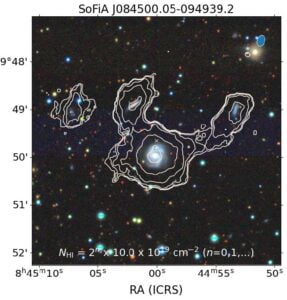Project area/S
- Extragalactic Radio Science; Spectral-line Radio Astronomy
Project Details
We’re encountering an interesting problem with data from the MeerKAT radio telescope in South Africa: it’s so good that the more we look at other parts of the data, the more new galaxies we’re finding through the detection of the cold, star-forming gas! Given results so far, we can expect to unearth even more in newer observations, but finding and analysing new galaxies by hand in more datasets will be quite timely.
The student will work with the new MeerKAT data and help streamline the data reduction and detection of gas-rich galaxies. They will compare results with a separate dataset from the ASKAP radio telescope in Australia, and look at the properties of the newly discovered galaxies using optical data.
Student Attributes
Academic Background
Preferably astronomy/physics background
Computing Skills
Experience with Unix or linux, python
Training Requirement
Some basic Linux and supercomputing usage may be
useful
Project Timeline
- Week 1 Inductions and project introduction
- Week 2 Background reading and Initial Presentation
- Week 3 Learning basics of matter content of galaxies and FRBs, focus on HI and data reduction
- Week 4 Searching via CARTA and learning how to run the SoFiA source-finding algorithm on two MeerKAT observations
- Week 5 Creating HI moment maps and spectra of detections andcompare with results from the WALLABY survey for one of the observations
- Week 6 Cross-matching the galaxy detections with ancillary (e.g. optical, UV, infrared) data and begin development of a streamlined approach to source finding
- Week 7 Complete streamlining the automated source finding workflow; work on existing script for obtaining ancillary data and calculating galaxy properties
- Week 8 Further enhancements and automation of the post-analysis scripts
- Week 9 Final Presentation
- Week 10 Final Report

An example of the detections we’ve seen in MeerKAT observations. Cold neutral hydrogen
gas, from which stars form from, is given by the white contours overlaid on DeCALS
optical imaging. This example showcases four galaxies in a group environment interacting
with each other, where one galaxy is stealing the gas from its companions. Image credit:
Marcin Glowacki.
